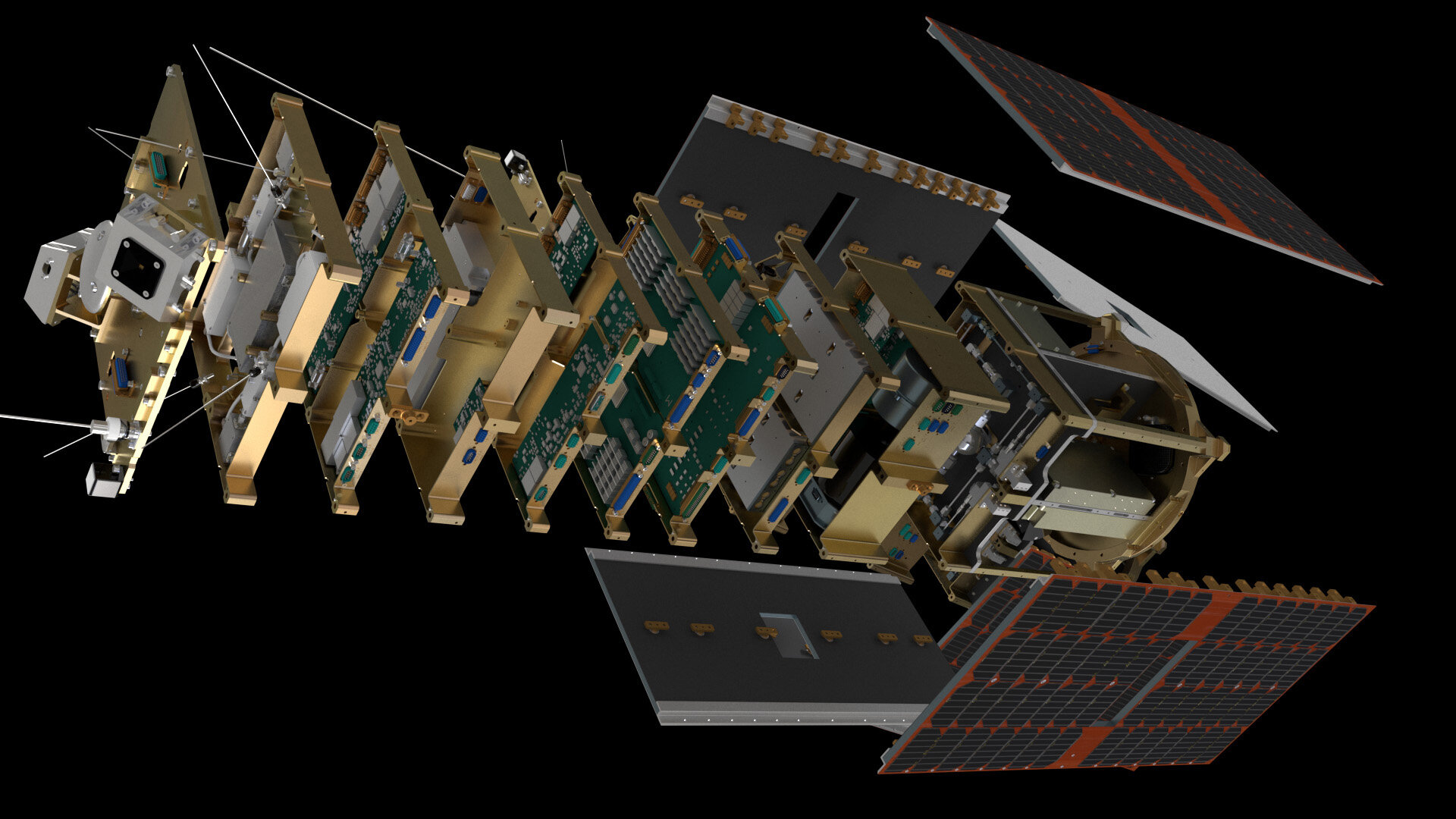The ESEO Mission
The ESEO mission builds on the ESA Education Office’s experience with previous satellite missions: SSETI Express (launched in 2005), the YES2 tether and re-entry capsule experiment (launched in 2007), and the student CubeSats launched in 2012, 2015 and 2016.
The ESEO satellite was launched into Low Earth Orbit (LEO) on 3 December 2018. ESEO was a passenger together with about 70 other micro, nano, and pico satellites from several countries from all over the world.
The ESEO mission is based on a Sun Synchronous Orbit (SSO), circular with an altitude of 575 km, inclined 97.5° (polar). ESEO will cross the Earth equator (descending node, or LTDN) at about 10:30 (UTC) every day. The orbital period is about 94 minutes. Its nominal attitude will be nadir pointing (that is pointing down perpendicularly towards the Earth surface).
The nominal mission duration is 6 months, with the possibility of extension of one year. At the end of its mission, ESEO will deploy a sail that will accelerate its re-entry and burning in the atmosphere by means of increased atmospheric drag (a student technology demonstration experiment in itself). ESEO is compliant with the European space-debris mitigation guidelinesfor the end of satellite missions.

Mission Objectives
During its operational mission phase, ESEO will run the scientific experiments and test the various technology demonstrators designed and built by the students, and constantly monitor its own performance.
- Take pictures of the Earth
- A microcamera will take pictures of the Earth in visible light for educational and outreach purposes. The camera is developed by the University of Tartu Observatory, Estonia.
- Measure radiation levels in Low Earth Orbit
- Dedicated sensors (a Langmuir probe and a TRITEL three axis dosimeter will measure the absorbed radiation dose, the equivalent dose (a term that takes into account the biological effectiveness of the radiation), and the Linear Energy Transfer (LET) spectra of cosmic radiation. These instruments are being developed by the University of Technology and Economics (BME) and the Academy of Science (MTA-EK) in Budapest, Hungary, respectively.
- Test technologies for future ESA education missions
- An S-band communication system developed by the Wroclaw University of Technology, Poland, will serve as a downlink for scientific data and measurements; a GPS receiver developed by the University of Bologna, Italy, will test real-time GPS-based positioning for satellites in Low Earth Orbit (LEO); and an Attitude Determination Estimator (ADE), a software experiment coordinated by the Delft University of Technology (TU Delft), Netherlands, will verify the efficiency of four different computing algorithms for attitude and orbit determination. At the end of the flight operations, a de-orbiting mechanism (DOM) – a deployable sail built by Cranfield University, UK - will be deployed in order to increase the atmospheric drag and will accelerate the satellite atmospheric re-entry and burn up.

- Operate ground stations at UHF and S-bands
- A UHF ground stationin Forlimanaged by the University of Bologna, Italy, will be dedicated to the uplink and downlink of operational data at UHF frequencies(telemetry and telecommands); a back-up station managed by the University of Vigo, Spain, is also in place. All data from the satellite’s experiments will be transmitted to a ground station in S-Band based at the University of Technology in Munich (TU Munich), Germany.
- Enable amateur satellite radio connection to the satellite in VHF-band
- The AMSAT payload, provided by AMSAT UK in cooperation with the University of Surrey, UK, allows the satellite to establish a downlink connection to hundreds of ground stations in the AMSAT network, sending both housekeeping and scientific data. These data will be used to run science and technology lessons in schools and universities.
Through the accomplishment of the specific mission objectives of the different students’ payload, the main mission objective of the ESEO educational project will also be reached: provide students with extensive, hands-on experience of a space project. This will equip them with the necessary skills to confidently enter the high-technology workplace of Europe’s future.
Since its beginning, and throughout all its phases, the ESEO programme involved more than 600 students from ESA Member States.
Contact
Joost Vanreusel, Head of the ESA Academy Unit
Joost.Vanreusel @ esa.int
Antonio De Luca, Satellite System engineer
Antonio.De.Luca @ esa.int


